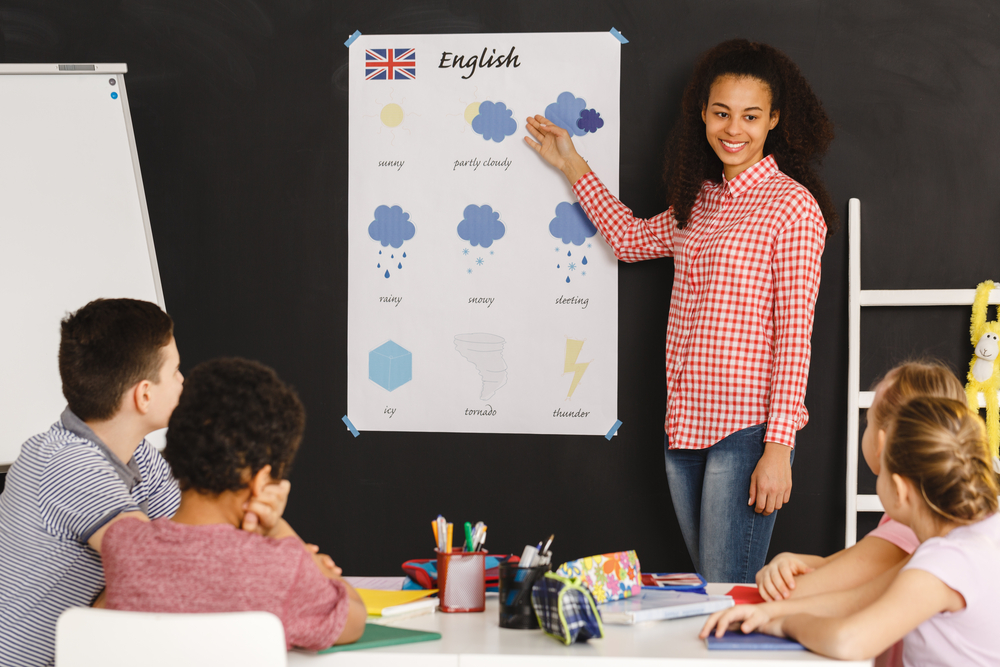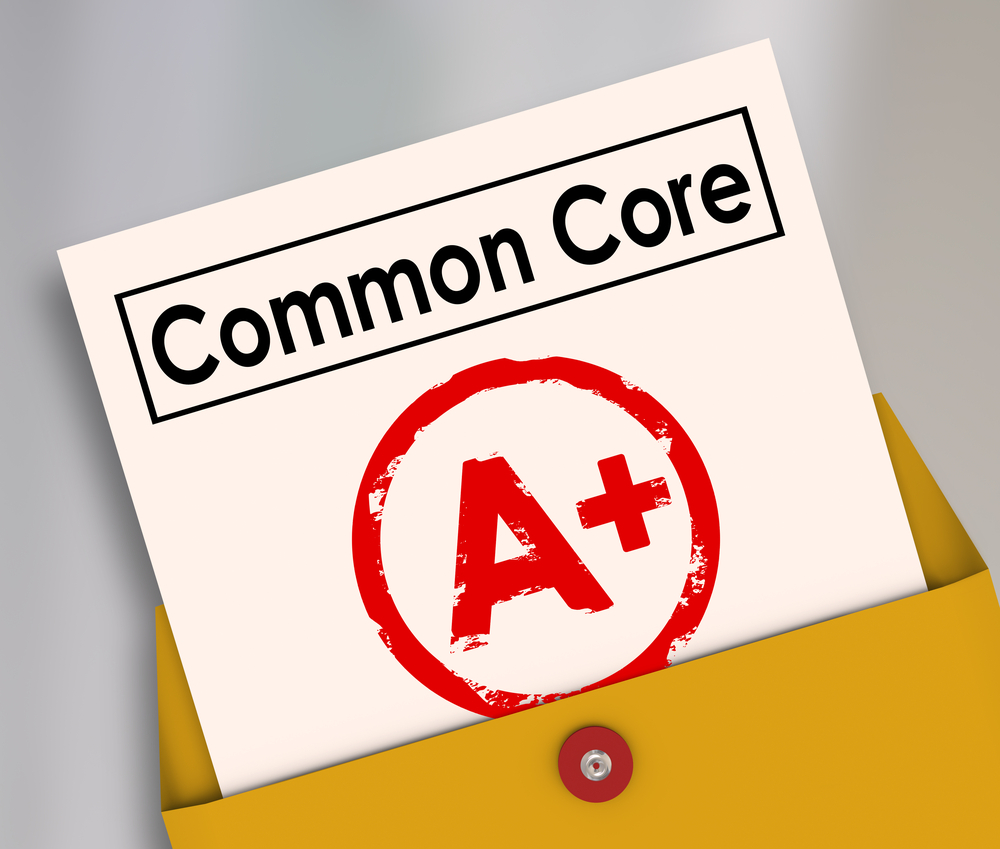Understanding opposites Normal Worksheets for Ages 4-7
3 filtered results
-
From - To
Discover our "Understanding Opposites" normal worksheets designed for children ages 4-7! These engaging and interactive worksheets help young learners explore the concept of opposites in a fun and meaningful way. From sunny and rainy to big and small, children will gain essential vocabulary skills while reinforcing their understanding of contrasting words. Our worksheets feature vibrant images and playful activities that capture young imaginations, making learning enjoyable and effective. Perfect for parents and teachers alike, these resources provide an excellent tool for developing critical thinking and language acquisition in early childhood education. Start your child’s journey to mastering opposites today!
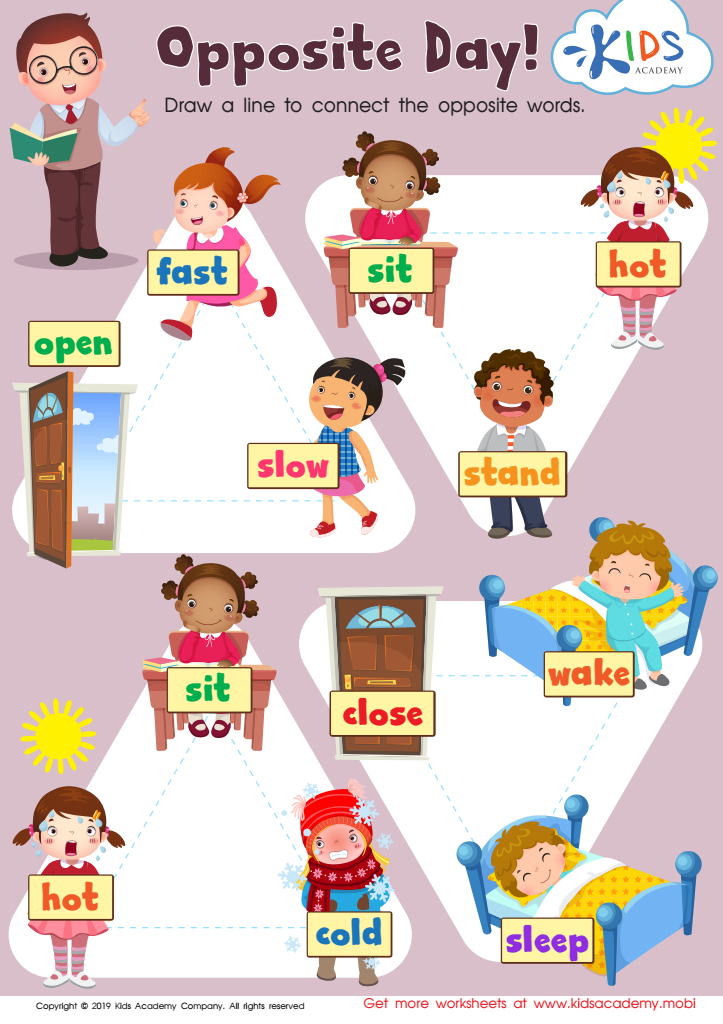

Opposite Day Worksheet
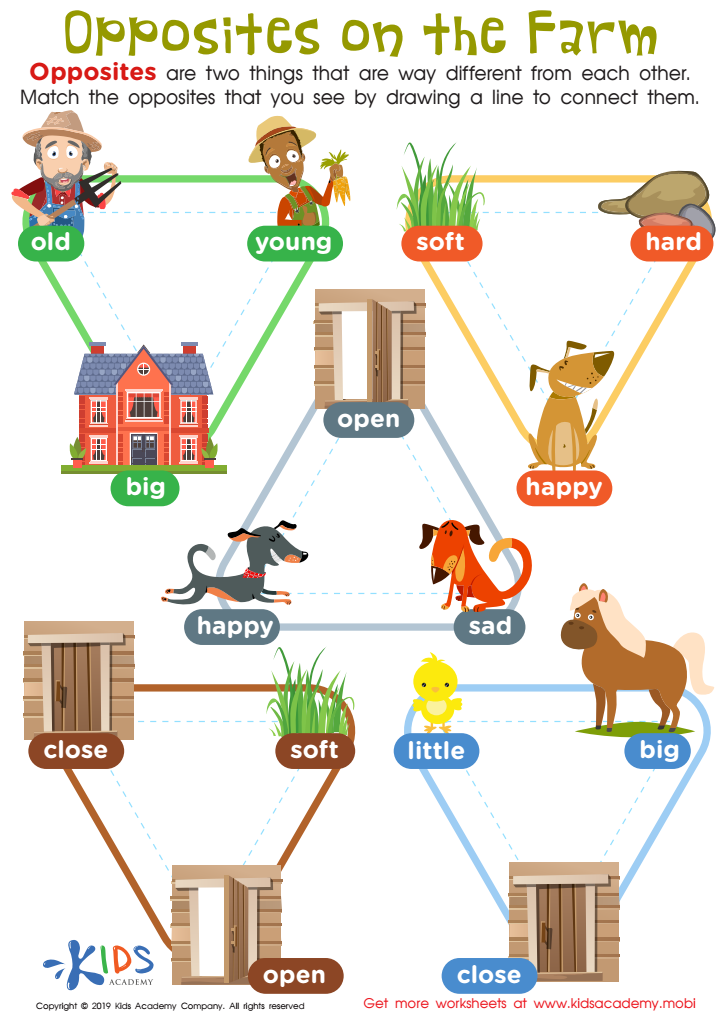

Opposites on the Farm Worksheet
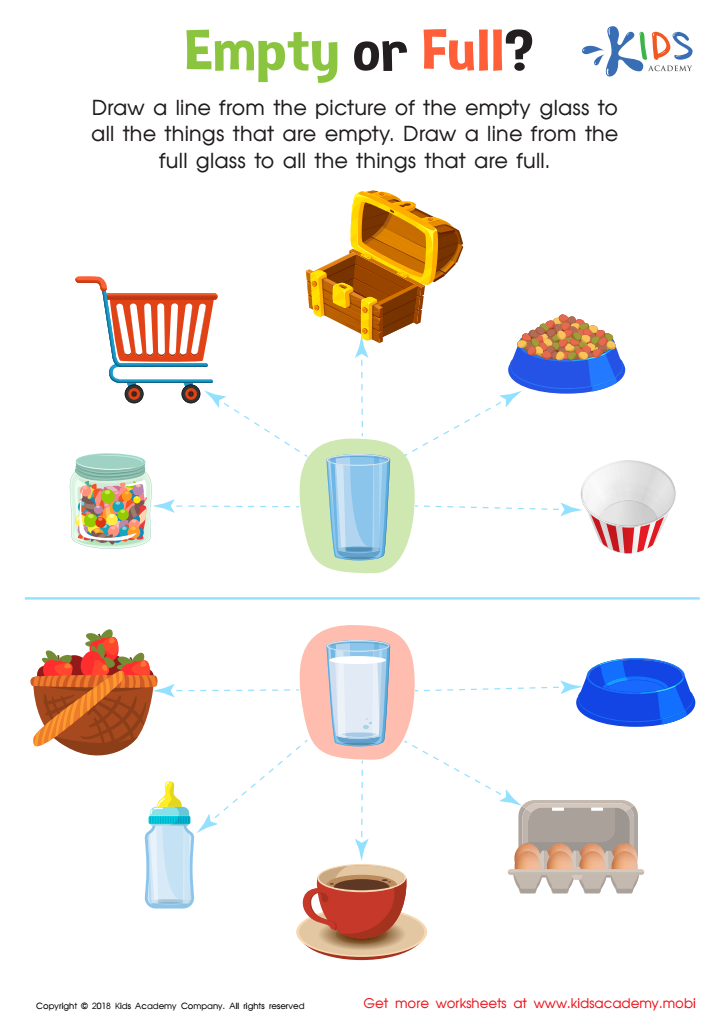

Empty or Full? Worksheet
Understanding opposites is a fundamental concept for children aged 4-7 that plays a crucial role in their cognitive and language development. When parents and teachers focus on teaching opposites, they help children enhance their vocabulary, comprehension skills, and critical thinking abilities. Recognizing opposites, such as hot/cold, big/small, or happy/sad, lays the groundwork for effective communication and helps children describe their experiences and emotions more accurately.
At this stage, children are naturally curious and eager to make sense of the world around them. Learning about opposites encourages them to explore relationships and categories within their environment, fostering an early understanding of logic and reasoning. This knowledge also aids in comprehension when they encounter stories or situations presenting contrasting ideas or characters.
Moreover, understanding opposites promotes emotional intelligence, as children learn to identify and articulate their feelings by comparing them to their opposites. For teachers and parents, taking the time to introduce and emphasize these concepts can lead to more engaging learning experiences, enhancing a child’s readiness for more complex language and social interactions in the future. Ultimately, teaching opposites is an essential foundation for young children's holistic development, setting the stage for lifelong learning and communication skills.
 Assign to My Students
Assign to My Students





